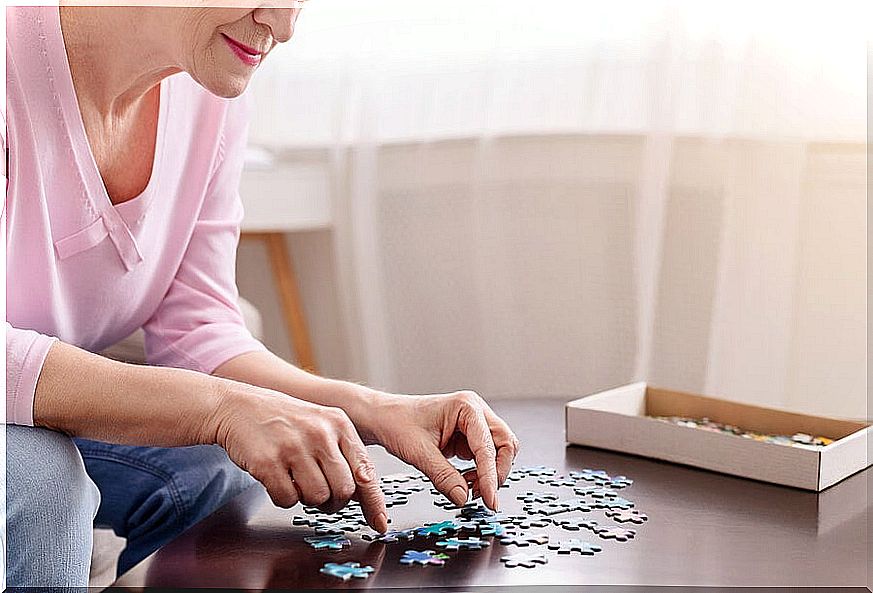The 3 Types Of Sensory Memory
Memory involves a set of brain processes that are dedicated to interpreting, storing and retrieving information. Therefore, it is key for memories and learning, as well as for the development of intelligence. However, it does not always operate in the same way or part of the same information. This is how we have 3 types of sensory memory.
This variety would be the cause that we remember specifically on the tips of our fingers the pain from that time hot water fell on us. In sensory memory, processes of perception and cognition are linked.
Sensory memory types
Sensory memory is classified into 3 types : iconic, haptic, and echoic. Now we will develop each one to explain them better. Do not miss it!
1. Iconic sensory memory
It is also called visual memory . Through it we are able to remember numerous objects and details of a scene or situation in a few seconds.
It is very useful, since then processes are triggered that allow us to analyze and interpret what happened. For these details to be stored in the long-term memory, it will depend a lot on the significance that we have given them.
As an example, although it is obvious, let’s think about the different types of games that exist to exercise memory. For example, the one in which tiles with motifs are presented and then turned over so that we can guess and form the pair. Here we are putting into play nothing more and nothing less than iconic memory.

2. Haptic sensory memory
It is also known as tactile memory . As its name indicates, it is one that is activated by contact, from those stimuli that impact the skin.
Although it is also proposed to add to the muscles, joints and tendons. That is, in tactile sensory memory both proprioception and interoception would be involved.
This type of memory manages to work around 4 or 5 items simultaneously, with which we could interact at the same time by touching, moving, lifting and sliding, among others. It allows us to examine objects by touch and interact with them.
3. Echoic sensory memory
Also called auditory memory . This type is the one that is in charge of mediating between the auditory stimulus and the memory.
Although it is a type of sensory memory that is shorter, in relation to the visual one (5 to 7 pieces of information are retained for up to 4 seconds), we also construct auditory sensory images that can be stored for a longer time.
Of course, the permanence of the auditory stimulus in the mind will also have to do with its intensity and the impact it has caused us.
Functions and benefits of stimulating this memory
According to the modal model detailed by Bruning, memory is a set of retention systems. In the case of the sensory, it is responsible for retaining the stimuli in the sensory registers before the information is lost. That is, temporarily stores.
Perception works by paying attention to the stimuli received. Then follows a pattern recognition process, through which we associate the new information with an existing pattern. Finally, a meaning must be given to the stimulus. Depending on it, it will be information that is stored temporarily or permanently.
So the importance of sensory memory and its different types is that it adds meaning to experiences. That is, it returns to that experience more complete, by allowing us to perceive different stimuli, which makes us mean it in another way. The stimulus may disappear, but there the memory remains to remind us how good or bad it felt.
On the other hand, sensory memory has a fundamental impact on learning, since this process usually involves not only the mind or cognitive processes, but also the senses and perceptual processes.
Third, we can think about the importance of sensory memory and its interaction with short and long-term memory. In general, stimuli are presented for a brief moment, so before we have even had time to mean them or understand what they are, we would have already forgotten them. There the sensory registers intervene.

Enjoy with the senses
Now that we know that sensory memory collaborates so that we can have a complete memory of experiences. On the one hand, it makes us more aware of the experiences and disposes us to enjoy with all the senses, in such a way that we can store an enriched record of the moment.
We can also apply it in other areas. For example, in the teaching and learning processes. At the crossroads of different types of information is meaningful learning. It is important to choose well what resources we will use, since a limited amount of stimuli can be handled.








